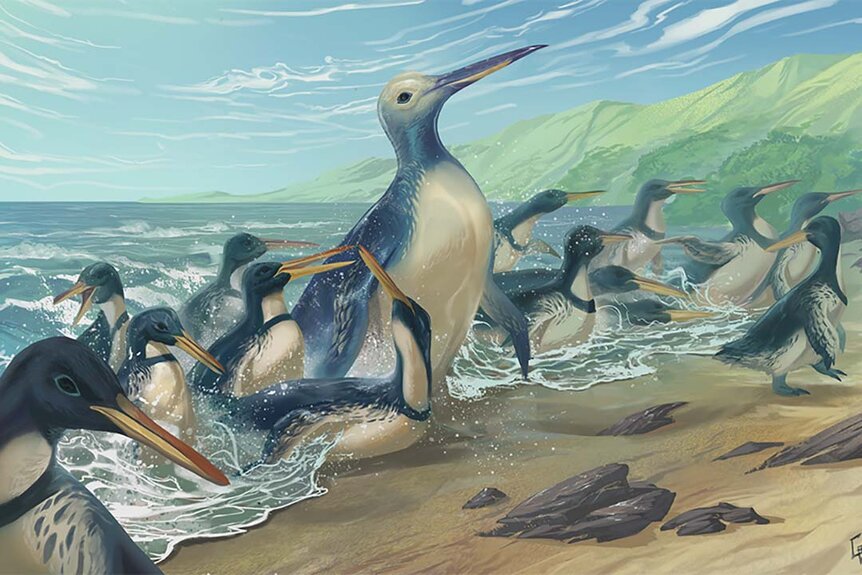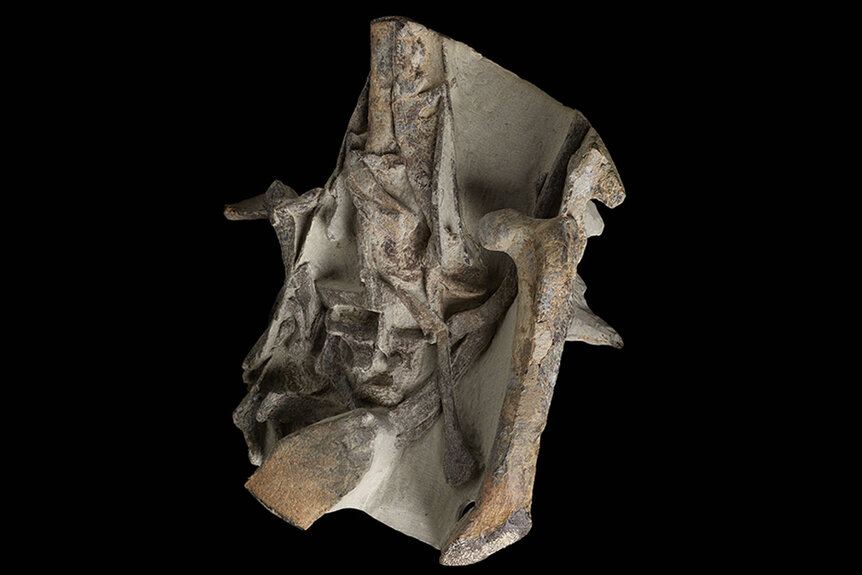Create a free profile to get unlimited access to exclusive videos, sweepstakes, and more!
Some of the first penguins were likely 340 pound behemoths
When they waddle, the Earth shakes.

The 2014 animated feature film Penguins of Madagascar takes place in the immediate aftermath of Madagascar 3: Europe’s Most Wanted. It follows the titular penguins Skipper, Kowalski, Rico, and Private as they work in secret to save the world from Dave, a maliciously motivated Giant Pacific octopus.
While Dave may be a giant among octopodes, our heroes are normal sized Adélie penguins, only a foot or two tall and 10 to 20 pounds at most. It’s not exactly a fair fight, but if their adventure had happened 60 million years ago, Dave would have swam away screaming. Recently, Daniel Ksepka from the Bruce Museum, and colleagues, described a newly discovered species of extinct penguin which stood roughly six feet tall and weighed in at an estimated 340 pounds. The discovery was published in the Journal of Paleontology.
RELATED: Dinosaur-killing asteroid triggered a global tsunami with mile-high waves
Thanks to DNA evidence and the morphology of their wings, paleontologists know that penguins evolved from flying birds in the first few million years after the dinosaurs died out. Penguins first appear in the fossil record shortly after the Cretaceous mass extinction and likely lost flight in favor of returning to the seas. In the wake of the asteroid’s literal and ecological impact, environments all over the world, including those in the oceans, were vacant and waiting for new tenants.
“There’s an ecological vacuum when marine reptiles are disappearing and there’s an opening in those niches. Penguins were one of the first vertebrates, long before whales and sea lions, to secondarily go back to the water,” Ksepka told SYFY WIRE.
It’s likely those first penguins looked a lot like the penguins we’d recognize today, the kind DreamWorks makes movies about. That’s because the size of flying birds is largely constrained by how much weight their wings can carry through the air. The first penguins were small because their flying ancestors were small, but once a bird ditches flight in favor of swimming, those size constraints go out the window. And there are plenty of reasons to be big, if you can manage it.
“You’re less vulnerable to predators and you can eat bigger things. Within your own species, you can compete better for mates. While diving, you can dive deeper and you can regulate your temperature better, so you need to waste fewer calories staying warm,” Ksepka said.
With many of the oceans’ major predators gone and plenty of tasty resources for the taking, some species of penguin hit the open ocean and gorged themselves to an incredible size. Almost as soon as penguins appeared on the scene they went through a fantastic burst of diversification, resulting in species of every size living and interacting with one another on New Zealand’s South Island.
RELATED: Penguins have extramarital affairs before returning to their regular partners
“That may be in part because there is a greater range in size. Nowadays, in most places you only have little penguins, but when you add in species the size of Emperor penguins and then person-sized penguins, they can fit in the environment without competing as much,” Ksepka said.
The fossils were found by Alan Tennyson, curator of the Museum of New Zealand Te Papa Tongarewa, while combing the beaches on the East Coast of the South Island. The sediments in this area will grab onto organic material like bone, shell, or wood and form a hard casing around it. The result are solidified eggs distributed in the wider sediment.
Over time, erosion breaks these fossil-bearing boulders loose and drops them on the beach where the waves lap away at them. Eventually a piece of bone or a tooth pokes through the surface, betraying their presence. When paleontologists cracked the boulders open, some of them had the scattered remains of gigantic penguins. While paleontologists didn’t recover complete skeletons, they were able to identify and characterize the humerus, and that was enough to help them back into the size of the animals when alive.
“It’s not easy, but with modern penguins you can grab one and put it on a scale. For a fossil animal it’s a lot more difficult. We took 20 species of living penguin and measured the different dimensions of the humerus, the main flipper bone. Then we created a regression that showed if your humerus is this long, you probably weigh this much,” Ksepka said.
More specifically, scientists looked at the relationship between the width of where the humerus connects with the shoulder and the length of the overall bone. That relationship had a strong correlation with body mass, and there’s a good reason for that. On land, the femur supports the body and is generally a good indicator of body mass, but if you’re a bird in the water, the humerus rules.
RELATED: This five-foot monster penguin once waddled the wilds of ancient New Zealand
Water is 800 times denser than air, so swimming requires more strength than flying requires. As a result, the characteristics of the humerus scale with the amount of muscle needed to propel an animal through the water. The bigger you are, the beefier your arms need to be. Using their calculations and plugging in the measurements of their fossil arm bones, researchers landed at a 340-pound monster, scouring the seas for anything it can fit into its beak.
Unfortunately for the penguins, as global ecosystems recovered after the Cretaceous extinction, the habitats large penguins adapted to exploit got crowded and they were forced out. Today, only their smaller relatives remain.
The Penguins of Madagascar might not be giants, but they have giant hearts and that’s just as good. Start your penguin binge with Madagascar, streaming now on Peacock!




























